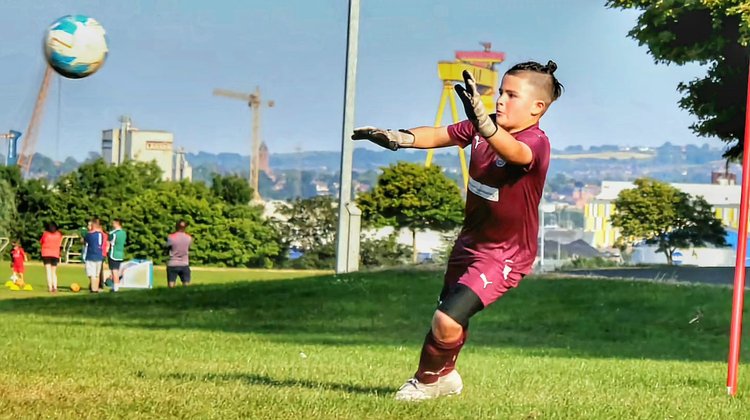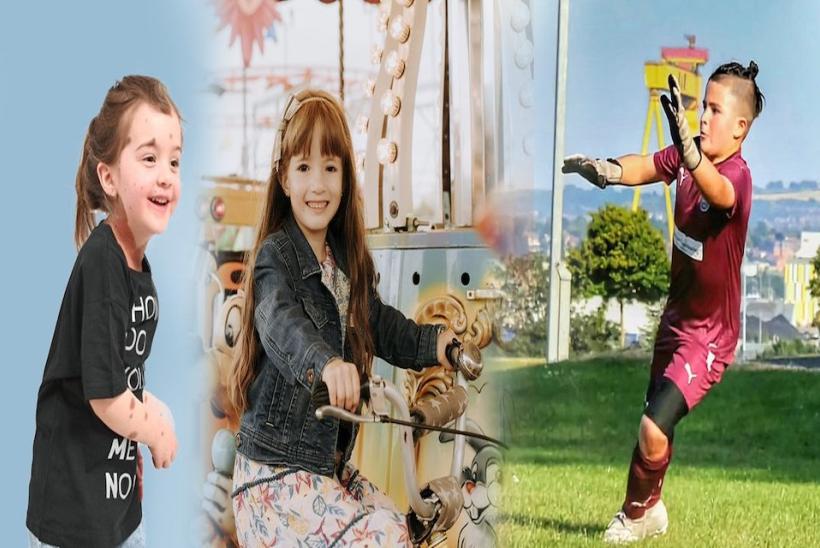Research shows potential for ‘life-transforming’ giant mole reversal therapy
Researchers have designed a new genetic therapy that could be used to reverse large and painful giant moles after further studies.
For children who are born with congenital melanocytic naevus syndrome (CMN), up to 80% of their body can be covered in big, painful or itchy moles or birthmarks and is caused by genetic mutations acquired in the womb. These moles can develop into a severe type of skin cancer called melanoma.
Researchers from Great Ormond Street Hospital for Children, UCL Great Ormond Street Institute for Child Health (GOS ICH) and the Francis Crick Institute have been working to find a treatment for CMN for many years.
Veronica Kinsler, Principal Group Leader of the Mosaicism and Precision Medicine Laboratory at the Crick, Professor of Paediatric Dermatology and Dermatogenetics at GOSH/UCL, and NIHR Research Professor, said: “CMN is physically and mentally challenging for children and adults living with this condition and for their families. These results are very exciting, as not only does the genetic therapy trigger self-destruction of the mole cells in the lab, but we have managed to deliver it into the skin in mice. These results suggest that the treatment in future could potentially reverse moles in people, however more testing will be needed before we can give it to patients.
“We are very grateful to our patients at Great Ormond Street Hospital, who have been actively participating over many years to help us produce this new potential therapy. After more studies in mice, we hope the therapy can soon enter clinical trials in people.”
The research
In the future, new potential treatment could be used to reverse moles, and therefore help prevent children and adults from developing melanoma. It could also potentially reverse other types of at-risk moles as an alternative to surgery which can be invasive and traumatising for patients.
Published in the Journal of Investigate Dermatology, the researchers blocked a gene called NRAS, which when mutated, can cause cancer.
The team used a genetic therapy called silencing RNA, which silences the mutated NRAS in mole skin cells. The genetic therapy was delivered in special packages directly to mole cells. Importantly, silencing the gene then triggered the mole cells to self-destruct.
This research was funded by the National Institute for Health and Care Research (NIHR), Caring Matters Now Charity and Patient Support Group, LifeArc and the NIHR Great Ormond Street Hospital Biomedical Research Centre.
Hundreds of patients at GOSH have been part of this exciting research development.
For further support after reading this article please visit the Caring Matters Now charity.
Ada's story

Three-year-old Ada has 70% of her body covered in CMN mostly on her neck and back, which can be very itchy and painful. Ada loves swimming and the sea but needs to take extra precautions for her CMN.
When she was just four months old, she had surgery to remove some of the nodules from her back that were painful and debilitating. At that time, Ada’s parents Rachelle and Greg decided to donate some of her skin cells, which have now been used in Dr Kinsler’s research.
They said: “When we heard about this research project, we wanted to do everything we could to try and help Dr Kinsler and her team. We never stop thinking and worrying what life will be like for Ada as she grows and becomes more aware of her CMN and, how it will affect her long term.
“Knowing there has been a huge step forward in the CMN research and there could be a chance of Ada’s CMN being reversed and possibly reducing Ada’s risk of developing melanoma, has blown our expectations out the water.
“It is ‘mind-blowing’ to think that this treatment option could be available in only a matter of years.”
Now at nursery, Ada enjoys being creative and loves arts and crafts and playing role play with her older siblings.
Elijiah’s story:

Elijah, 10, was born with a notable CMN on his scalp and first came to GOSH to see Professor Kinsler when he was 11 months old.
Elijah’s Mum, Hannah, who works with families also experiencing CMN through her role as Head of Support at Caring Matters Now said: “As soon as we arrived at GOSH all those years ago, we felt such a sigh of relief meeting with Professor Kinsler and her team.
“Professor Kinsler and her team’s expertise and experience has always made us feel like we have more control over Elijah’s condition and that we are in safe hands”.
Due to his CMN, Elijah's scalp is dry and requires prescribed shampoo as well as this his scalp is fragile and cuts easily. He has to monitor for any sudden changes, and be careful in the sun, with suncream applied every 3 hours during the spring and summer months. This is especially important for him as he is an avid goalkeeper and spends a lot of time outdoors playing football.
Hannah said: “As a parent, it is a scary thought to wonder about the looming threat of cancer for your child. This thought has inspired me to help Professor Kinsler in whatever way we can to find a treatment.
“Ten years later, it is like a dream come true that we are one step closer. There are no words to describe how grateful we are for the impact this could have on our family in the future and on others affected by CMN”.
Hanna’s story

Seven-year-old Hanna was born with a large dark CMN covering her back and tummy extending down to her thighs with smaller satellites on her legs and arms.
When she visited GOSH as a baby, she underwent many tests and during this time, Hanna’s Mum, Iwona decided to donate skin samples.
Over the years, Hanna’s skin has been very itchy and dry with large lumpy nodules making everyday life challenging. Hanna finds it difficult to sleep because of how itchy and sore her CMN is. Focusing on daily activities, can be difficult as she is constantly scratching her back to the point of making her skin break and bleed.
Along with supporting the gene therapy, Hanna has also been trialing another drug that can help with her itchiness until long-term treatments are developed.
Iwona said: “This research has the potential to alter Hanna’s quality of life and I am hopeful that with Dr Kinsler leading one day we will find it”.


